Spectacular autumnal landscapes. Foliage
2023
Abruzzo is an Italian region located east of Rome, between the Adriatic and the Apennines. The hinterland is mostly made up of national parks and nature reserves. The region also includes medieval and Renaissance villages perched on the hills. The regional capital, L'Aquila, is a city surrounded by walls, damaged by the earthquake of 2009. The Costa dei Trabocchi, with its sandy coves, takes its name from the traditional fishing jetties.
You may also like
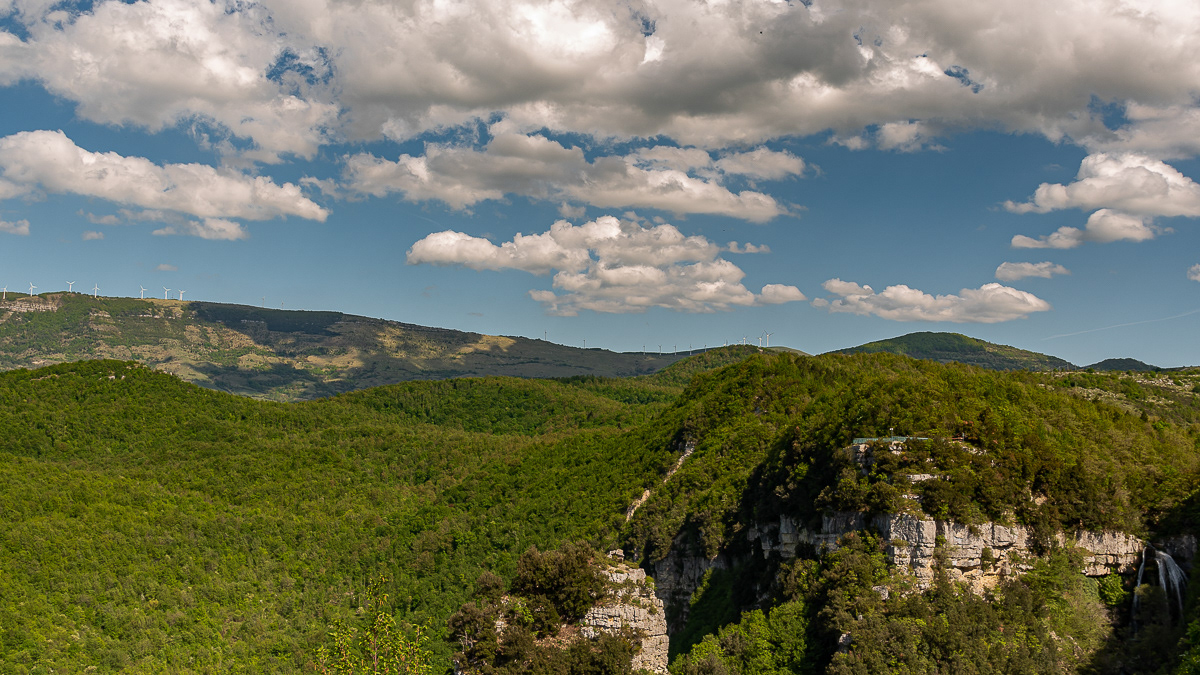
2021
Rio Verde waterfalls
Borrello, Chieti, Abruzzo. The Regional Nature Reserve and the WWF OASIS Cascate del Verde. It is a protected natural area of Abruzzo, established in 2001, which covers an area of approximately 287 hectares.
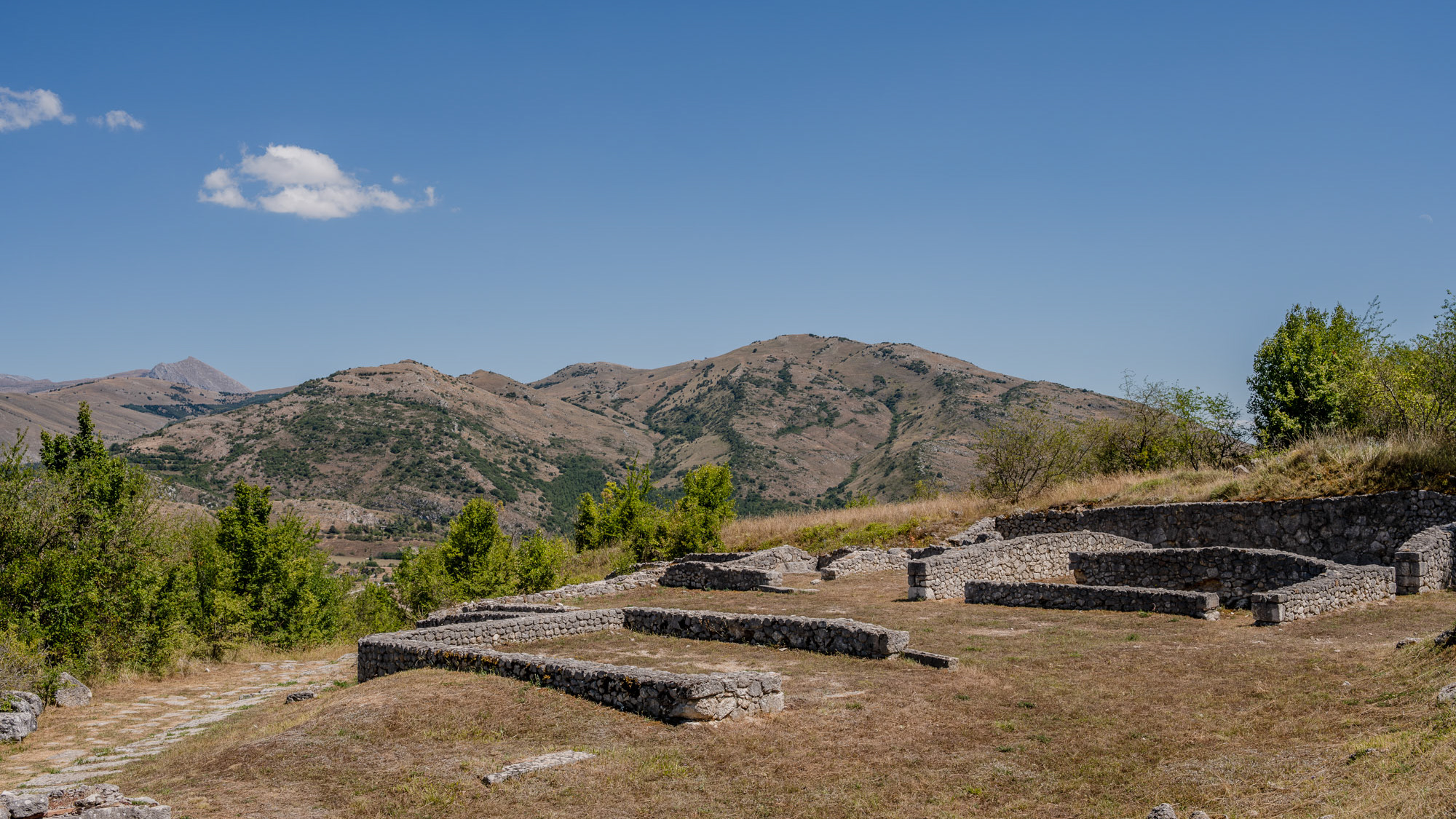
2024
Archaeological site of Alba Fucens
Alba Fucens is a site that arose in the 4th century BC in an elevated and well-fortified position, on approximately 34 hectares at 966 m above sea level, on the slopes of Mount Velino in Abruzzo.
2025
Ortona. The Aragonese Castle
The Aragonese Castle is a fortification of Ortona, on the edge of the city and overlooking the sea. Famous residence of the protector of Ortona Ludovica Ianneys (1756-1812) from 1773 to 1812.
2023
Fara San Martino, Chieti. San Martino in Valle Abbey
The abbey of San Martino in Valle is a ruined Benedictine abbey near the Gole di Fara San Martino in Fara San Martino in the province of Chieti. The first historical sources on the Church located inside the Castle of Rocca S. Martino date back to 829 which list it among the possessions of the monastery of Santo Stefano in Lucania of Tornareccio, to which it had been donated by Pepin the Short. In 844 it passed under the control of the bishop of Spoleto and subsequently among the possessions of the abbey of San Liberatore a Majella. In 1044 the Theatine count Credindeo on his deathbed and for the redemption of his soul and his loved ones (recalling the capitulars of the Longobard king Liutprando) donated the church to the venerable priest Isberto so that he could endow it with an independent Benedictine monastery. In 1172 it became part of the diocese of Chieti. In 1222 Pope Honorius II confirmed the donation of Count Credindeo. The monastery was suppressed in 1452 by Pope Nicholas V and united with the Vatican Chapter, to return in 1789 to the archdiocese of Chieti. The definitive abandonment of the monastery took place on 8 September 1818 due to a flood that covered it with debris. The first excavations for its recovery took place in 1891, but only with those of 2009 were the remains of the structure fully brought to light. The remains of the abbey show a gate to an internal courtyard bordered by a three-arched portico, on the north side of which is a bell gable. The interior of the church had to have three naves with stone slab flooring. A wall with three arches separates the central nave from the northern one, from where one enters what must have been the initial nucleus of the church, dug into the rock, which suggests the birth of the place of worship as a hermitage.

2021
Panoramas of Abruzzo
Abruzzo is an Italian region located east of Rome, between the Adriatic and the Apennines. The hinterland consists largely of national parks and nature reserves. The region also includes medieval and Renaissance villages perched on the hills. The regional capital, L'Aquila, is a walled city, damaged by the earthquake of 2009. The Costa dei Trabocchi, with its sandy coves, takes its name from the traditional fishing piers.
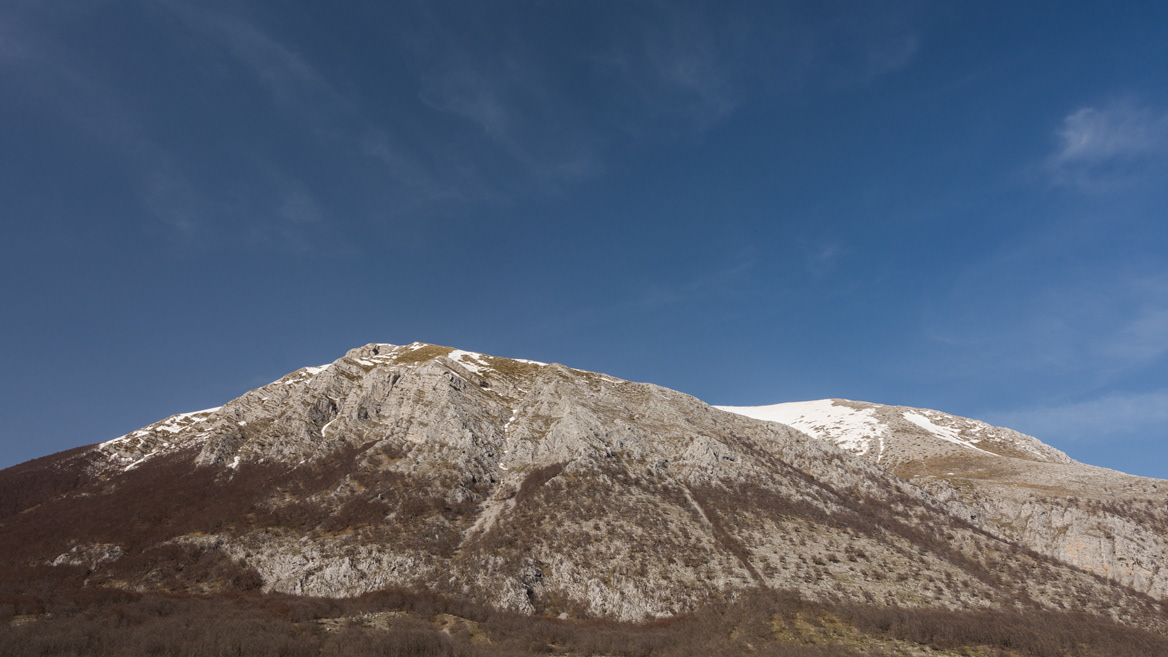
2018
P.N.A.L.M. - Part III
The National Park of Abruzzo, Lazio and Molise is a national park including for the most part (about 3/4) in the province of L'Aquila in Abruzzo and for the remainder in that of Frosinone in Lazio and in that of Isernia in Molise. It was inaugurated on 9 September 1922 in Pescasseroli, the current headquarters and central management of the park, while the body of the same name had already been established on 25 November 1921 with a provisional directorate. Its establishment took place officially with the Royal decree-law of 11 January 1923.
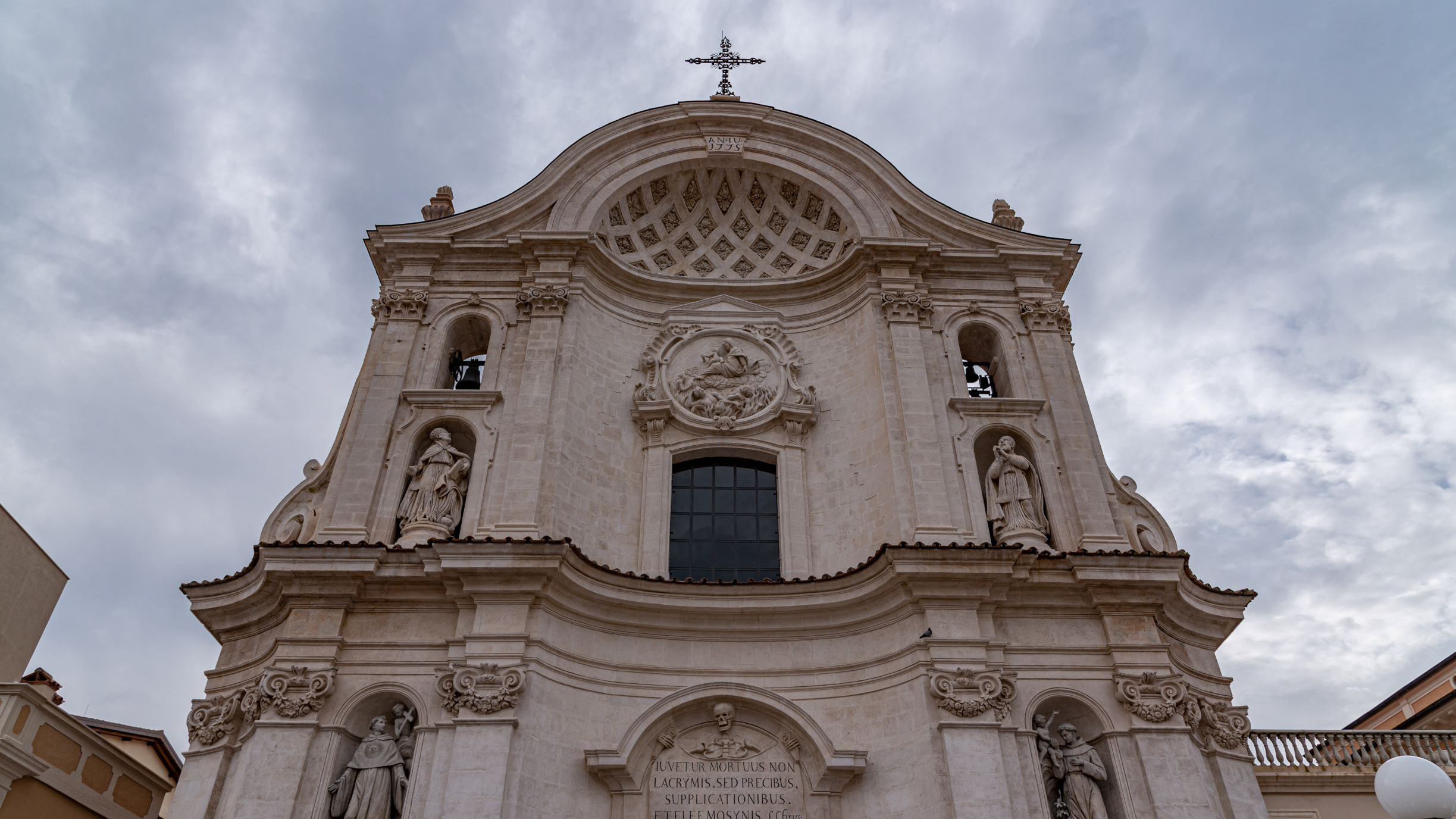
2020
L'Aquila. Church of Santa Maria del Suffragio - 2019
Built starting in 1713 for the victims of the earthquake of 1703, it is the symbol of the eighteenth-century reconstruction of the city and represents the maximum expression of the religious architecture of L'Aquila in the eighteenth century.
2023
Stiffe Caves, Abruzzo, Italy
The Stiffe caves are a complex of karst caves located near Stiffe, in the territory of the municipality of San Demetrio ne' Vestini (AQ), in Abruzzo, included within the Sirente-Velino regional natural park. Testimony of a unique active resurgence in Italy, made accessible to the public since 1991, today they constitute one of the main naturalistic sites of the L'Aquila area, recording over 40,000 visitors annually. The Stiffe caves represent one of the best-known karst phenomena in central Italy. The complex has been used since the Bronze Age even if archaeological remains have been found inside it dating back to the Neolithic and Eneolithic. The presence of an underground stream that gave rise to the complex led, in 1907 and on the initiative of the Marquis Alfonso Cappelli, to the construction of a hydroelectric plant of which some remains are still visible today near the entrance to the cavities. In 1956, when the plant was dismantled, the first speleological explorations began; after a first visit in 1957, the following year it was the Marche Speleological Group of Ancona that went beyond the first natural siphon. Subsequently, the Roman Speleological Group and, starting from the eighties, the Aquilano Speleological Group continued the first exploration attempts. The speleological excursions were then followed by a process of valorisation of the site which led to the opening of the complex to the public in 1991. In 1994 a mixed group of speleologists from L'Aquila and France managed to access for the first time the unexplored area after the first waterfall while in 1996 the speleology museum named after Vincenzo Rivera was opened. A second extension of the tourist route, up to the current length of about 700 m, was made in 2007 with the opening of the second waterfall to visitors, while the extension of the explored part of the cavity exceeds one kilometre. From 1996 to 2018 the site was managed by the public-private company Progetto Stiffe S.p.A. while it is currently managed directly by the Municipality of San Demetrio ne' Vestini. The 2009 earthquake led to a closure of the caves for safety reasons; the complex was only reopened to the public in 2011.
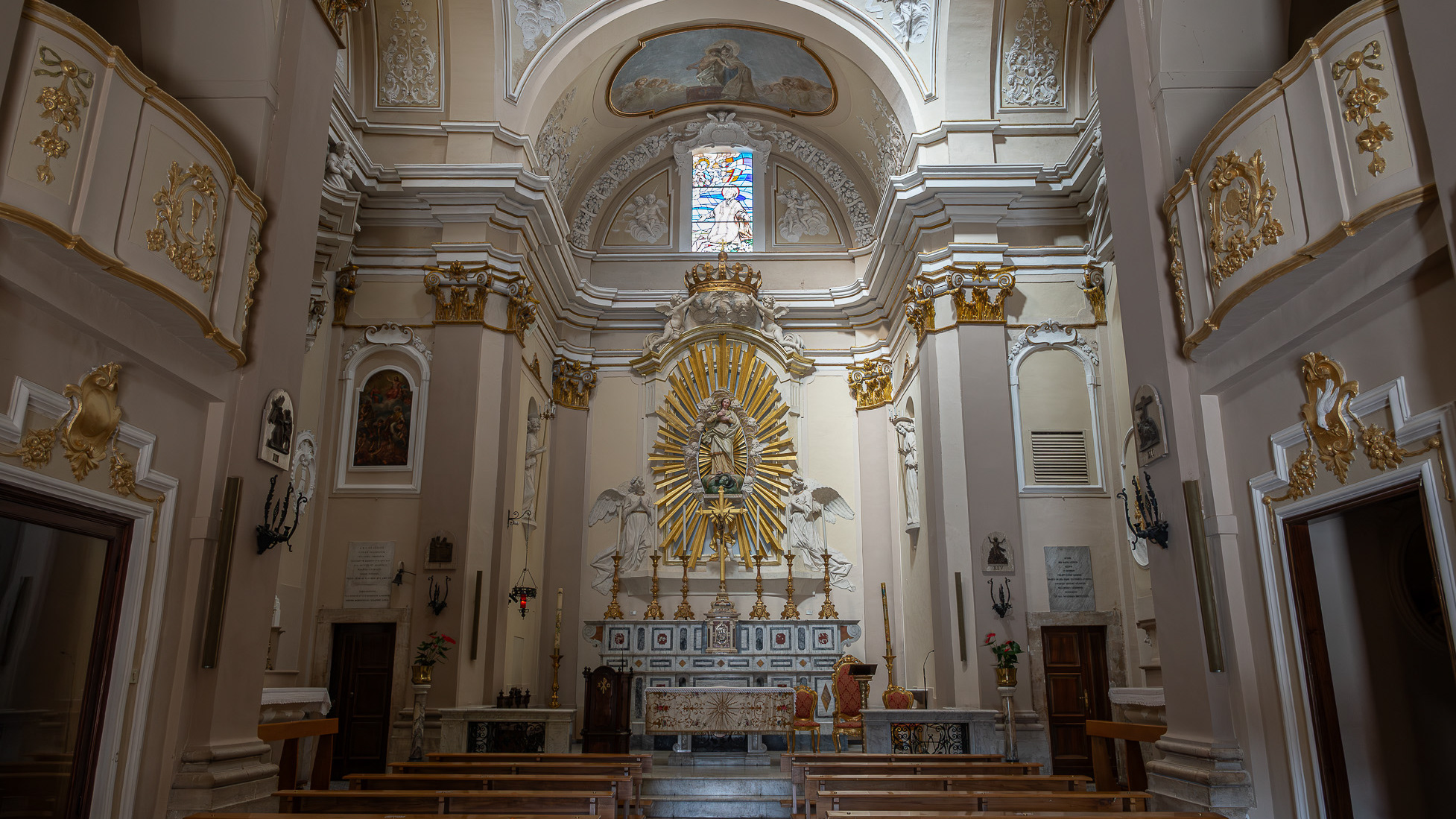
2023
Sulmona. Church of San Filippo Neri
The construction of the church and oratory of San Filippo Neri began in the mid-17th century and was completed in 1677. However, in the beginning the congregation was based - together with that of the Jesuit Fathers - in the church of Sant'Ignazio , located in Piazza XX Settembre and no longer existing today; only later did it move to Piazza Maggiore - the current Piazza Garibaldi - within the lively and populous Borgo Pacentrano. The earthquake of 1706 forced a reconstruction of the complex, which Baron Giambattista Mazara magnanimously took charge of between 1785 and 1794, deserving the commemorative plaque placed on the right wall of the church; the adjoining convent had to assume considerable decorum, so much so that in 1796 it was even able to host King Ferdinand IV of Bourbon on a visit to the city. In 1799, with the suppression of the Filipino order, the Fathers left the city and the sacred building, abandoned and reduced to profane use, was transformed into an oven and also used for military purposes. Likewise, the oratory, confiscated by the Royal Property, had various uses and today is the headquarters of the Command of the Guardia di Finanza. Only in 1920 did the church regain its religious use, becoming the seat of the parish of Sant'Agata. From here the traditional demonstration of the Madonna fleeing into the square begins on Easter morning, the joyful conclusion of Holy Week in Sulmona.
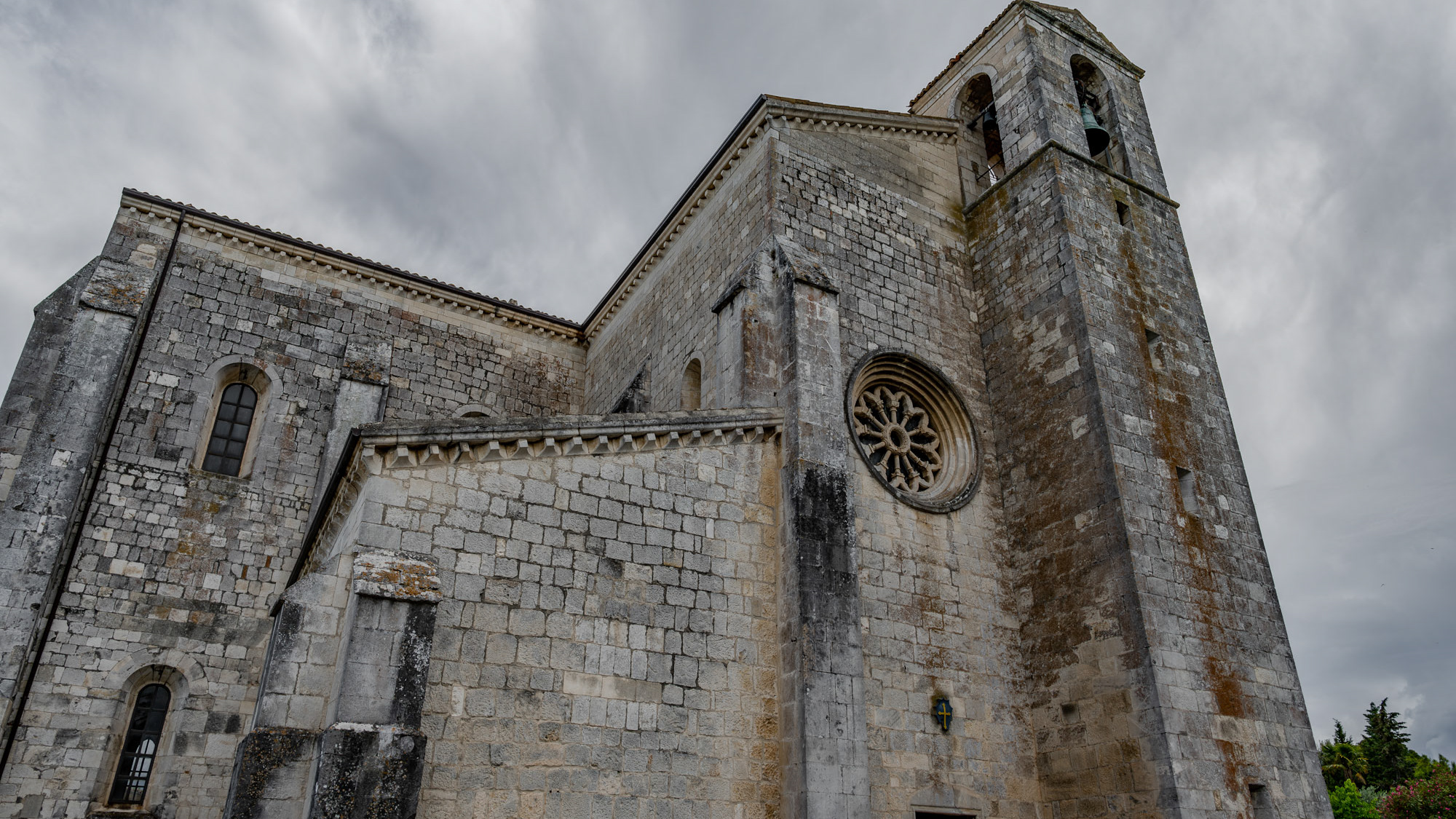
2024
Manoppello. Abbey of Santa Maria Arabona
Santa Maria de Arabona is an abbey dating back to the end of the 12th century located in the hamlet of the same name in the municipality of Manoppello (PE), declared a national monument in 1902.
